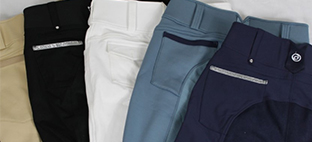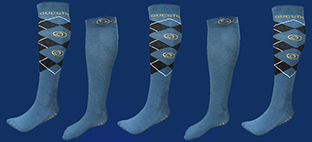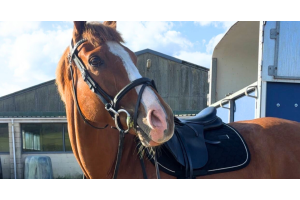Fitting Your Horse Saddle by Seasons
Fitting Your Horse Saddle by Seasons
A properly fitting saddle is essential for your horse’s comfort and performance, but did you know that seasonal changes can impact the fit of a horse saddle? As a horse’s body shape fluctuates with changes in workload, forage, and temperature, it’s crucial to regularly assess and adjust the saddle. Here’s a guide on how to fit a saddle to a horse throughout the year, ensuring optimal comfort in every season.

Spring: Reconditioning and Checking Fit
As spring arrives, many horses return to regular work after a lighter winter schedule. This often means an increase in muscle tone, which can impact how the saddle sits. Start the season by rechecking your horse’s saddle fit, as a saddle that was comfortable in winter may pinch or rub as your horse gains muscle. Look for signs of discomfort, such as sweating under specific areas, rubbing, or changes in behaviour when you saddle a horse. Adjusting the gullet width or adding a suitable saddle pad may help accommodate these early spring changes. If you ever have any concerns with the fit, the best action to take is to contact your local fitter before making any adjustments to avoid causing any further discomfort for your horse.
Summer: Monitoring Fit with Increased Work
With summer comes more time spent riding and training, which can lead to additional muscle development and even some weight loss. Increased sweat can also affect saddle fit by making the skin more sensitive. Check your horse saddle regularly, particularly if you notice uneven sweat marks. If the saddle begins to slip, it may indicate that adjustments are needed. Many riders find that adding a lightweight, breathable saddle pad in summer can improve comfort while helping with small adjustments in fit.
Autumn: Adjusting for Seasonal Changes in Weight
In autumn, horses often have access to lush pasture, which can lead to slight weight gain. This extra padding can alter the fit of the saddle, making it feel tighter. As the grazing season slows, regularly recheck the fit to ensure the saddle is sitting evenly on your horse’s back. If you’re noticing pressure points, consider a thinner saddle pad to prevent pinching, or consult a professional fitter to assess if minor alterations are needed.
Winter: Accommodating a Fuzzy Coat and Reduced Muscle Tone
Winter poses unique challenges for fitting a saddle. Many horses reduce activity in colder months, leading to a slight decrease in muscle mass. When you saddle a horse in winter, watch for slipping or gaps, as these can lead to chafing. A properly fitted winter saddle will help ensure your horse stays comfortable, even with a thicker coat.
Final Thoughts on Seasonal Saddle Fit
A well-fitted saddle is essential for any horse, and seasonal adjustments can make a big difference to your horse’s comfort and performance. Regularly check your horse saddle fit as the seasons change, and don’t hesitate to consult a professional fitter if adjustments are needed. With these simple adjustments, you can ensure your horse is comfortable in every season, allowing you to enjoy riding with confidence all year round.








